5 Sample Self-Advocacy IEP Goals
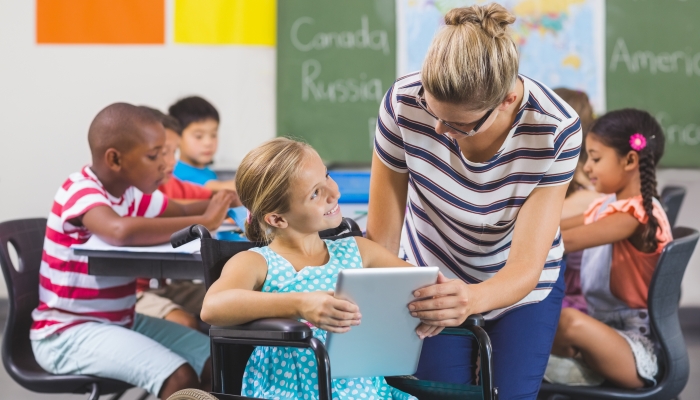
- Goal-setting meetings with the IEP team are an important step to determine what changes are necessary to teach students best and help accomplish the student’s individual, unique goals.
- The ability to self-advocate takes time and practice to develop.
- Students can develop self-awareness and problem-solving skills to effectively communicate with parents, teachers, and support personnel.
“Speak up!”
Those words can be heard in a variety of ways.
Sometimes they can be harshly spoken, with overtones of frustration and condescension, leaving the listener with a sense of feeling small, unseen, or inferior.
At other times, they can be a powerful call to action. A stirring invitation to practice self-advocacy skills and articulate concerns about our own behaviors or those of the people around us.
For children with physical, cognitive, emotional, or learning disabilities, learning how to advocate for their needs in an educational setting by working towards goals identified in an IEP requires learning strategies and advocacy skills to give voice to their unique goals, concerns, and challenges.
Learning to advocate for yourself—whether in an educational, healthcare, or other setting—is a lifelong process that takes time, practice, and repetition to build skill. Read on to see how self-advocacy skills can be developed through five sample areas of an IEP.
Goal #1: Requesting Accommodations
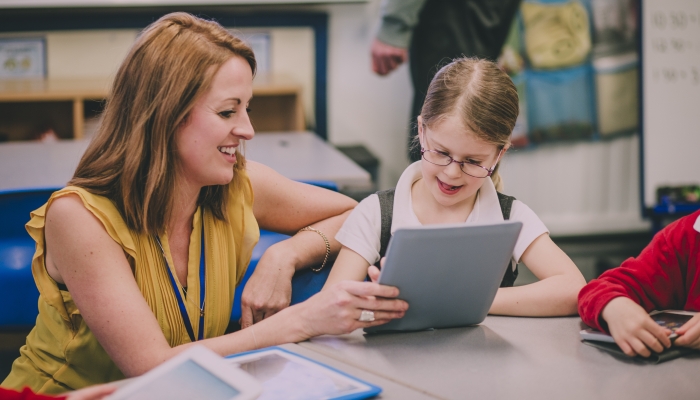
The terms “accommodations” and “modifications” can be used interchangeably in the realm of special education. However, each has a specific meaning and application in an educational or classroom setting.
Accommodations
Accommodations11. Harris, K.. Accommodations vs Modifications in Education. Modern Teacher. 2022. https://modernteacher.net/accommodations-vs-modifications refer to “changes made to the way instruction is delivered or to the way the curriculum is accessed by the student.”
In other words, the student in question is learning the same content as the rest of the class, but how the student is learning that content is changed.
Examples of real-world accommodations could be a visually impaired student using assistive technology during class to access lesson content, adaptive physical education, or a student with a learning disability or ADHD being given lesson notes from the teacher to supplement those the student takes during lecture.
All students, whether or not they have an individualized education program (IEP) or 504 plan in place, may need accommodations at different points in their schooling.
Accommodations can be formal (outlined in an IEP meeting and legally binding) or more informal (given at the discretion of each classroom teacher and may vary from year to year, based on the individual needs of the child).
Modifications
In education, modifications are considered “changes made to the content or curriculum that the student is expected to learn.”
Restated, modifications mean that what the student learning has changed.
Because students with modifications receive different content and instruction, these needs tend to be formally identified and communicated in each student’s individualized education program.
Ideally, students will take an active role in determining what accommodations or modifications will help them accomplish their individual learning goals and request to use their specific accommodations in the classroom setting when needed.
A sample IEP goal for requesting accommodations could include:
- The student will request specific accommodations in the classroom setting when needed.
Goal #2: Participating in IEP Meetings
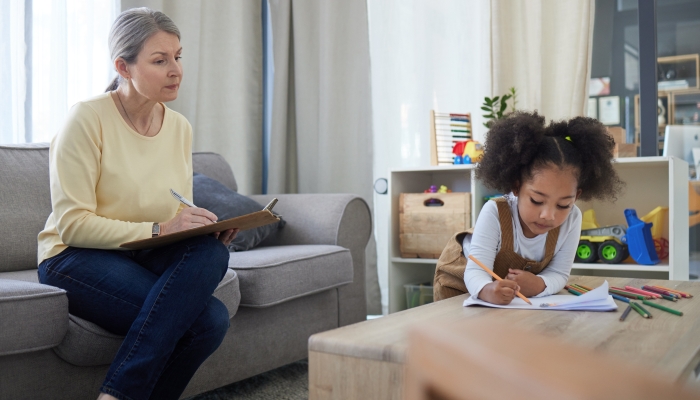
Empowering students to actively participate in their IEP meetings is an important skill and a vital part of the IEP process. No one knows what it’s like to live with your student’s unique challenges in a classroom setting better than your child.
Does your student balk at the idea of attending or being a part of their IEP meeting? Consider involving your child in alternative ways, such as:
- Role-playing scenarios or practicing questions that are likely to be asked during the meeting.
- Asking your child’s classroom teacher, special education teacher, or school counselor for questions that are typically asked during an IEP meeting. Talking about and preparing these answers at home may help reduce your child’s social anxiety or nervousness about speaking in front of a group of adults.
- Asking your child to write brief responses to some of the interview questions, or allowing them to dictate their answers while you write them down. Include examples to help your student express their ideas or concerns.
- With your child’s permission, using audio and/or visual recordings to ask them IEP interview questions in a familiar setting. This option allows your child to “attend” the meeting without actually having to be present.
Assist your child in setting their own, achievable goals for their education each year. This important information helps guide the actions of the IEP team and allows your child to build self-confidence as they develop these skills.
A potential IEP goal for participating in IEP meetings could be:
- The student will actively participate in their IEP meeting, including setting personal goals.
Goal #3: Developing Self-Monitoring Skills
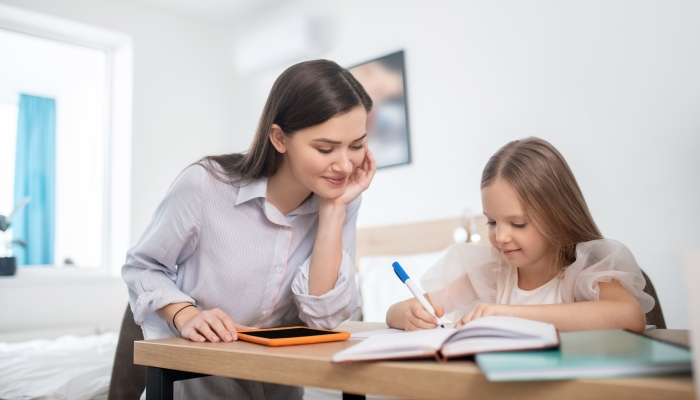
Are the identified academic and behavioral strategies working for your student?
Ideally, each student will develop an awareness of their own capabilities and learning strengths over time, as well as how those skills impact individual progress toward their academic and self-regulatory goals.
How can children work to develop this self-monitoring piece?
According to staff at Wilson College22. Benefits and Examples of Student Self-Assessments. Wilson College. 2024. https://online.wilson.edu/resources/examples-of-student-self-assessment, student self-assessment allows learners to be active participants in what they’re learning and to reflect on how they learn.
This reflection has a positive impact on cognitive processes like problem-solving, learning, and decision-making skills for future learning experiences.
Self-assessment tools that can be used by students after direct instruction from a teacher include:
- Learning logs. Also known as a personal learning journal, these logs serve as a data record for each student’s progress towards their IEP and learning goals. It also gives students a dedicated space to log their ideas and questions about learning, while tracking progress toward their academic, self-awareness, and self-advocacy goals.
- Reflective journals. Similar to a learning log, reflective journals tend to be less structured and centered around objective format or data. There are many different kinds of reflective journals available for students, including digital or video formats.
- Goal-setting. The use of SMART (specific, measurable, achievable, relevant, and time-bound) goals helps students move towards self-efficacy and provides a sense of accountability for their own learning progress.
- Rubric self-assessment. A rubric33. Using rubrics. Center for Teaching Innovation: Cornell University. https://teaching.cornell.edu/teaching-resources/assessment-evaluation/using-rubrics#:~:text=A%20rubric%20is%20a%20type,projects%2C%20portfolios%2C%20and%20presentations. outlines specific expectations for an assignment. Using a rubric self-assessment tool can give students a sense of how their work compares to a clear, impartial standard or framework and identify growth areas in their learning.
- Questionnaires or surveys. Regular use of these tools allows the student to give input into what strategies are or are not working, which may help decrease unwanted negative behaviors in the classroom and aid in developing goal-setting skills.
- Self-reflection worksheets. By using a simple format with open-ended questions or a structured rating scale, these forms allow students to describe the learning experience as a whole, their role and progress towards that learning, and identify areas of growth that will allow them to progress towards their learning goals.
- Exit tickets. These short reflections or responses at the end of a learning session help teachers get a sense of how well the student understood the material, identify any learning gaps, and plan future strategies or interventions to help students better understand the material.
Student knowledge, participation, and ownership of their vital role in their role in achieving IEP goals go a long way towards building self-confidence and independence—in the classroom setting and the world beyond.
Possible goals for developing self-monitoring skills could look like:
- The student will choose one or two self-assessment methods to use during the semester.
- The student will actively participate in the completion of a self-assessment tool 4 out of 5 times during the school week.
Goal #4: Enhancing Communication Skills
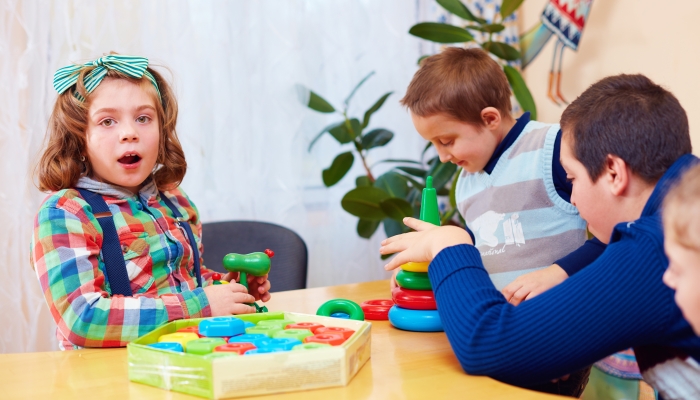
Most children, whether or not they have developmental, cognitive, or behavioral disabilities, lack the language skills to help their adults know what they need in terms of physical or behavioral support at any given moment.
A 2019 study44. Yavuz, H. M., Selçuk, B., & Korkmaz, B.. Social competence in children with autism. International Journal of Developmental Disabilities. 2017;65(1), 10–19. https://doi.org/10.1080/20473869.2017.1346224 found that non-verbal communication skills had a greater impact on positive social relationships than even self-awareness or verbal communication skills for children with autism spectrum disorder (ASD).
This study suggests that focused attention to teaching children appropriate language to communicate with others and advocate for themselves, with awareness of their own and other’s nonverbal cues, is more likely to position them for social success.
Knowing how to effectively communicate and see a response to stated needs is a big part of achieving appropriate assertiveness and reaching a self-advocacy goal.
A possible IEP goal for enhancing communication skill development could include:
- The student will effectively communicate with peers and adults about their needs and interests.
Goal #5: Building Problem-Solving Skills
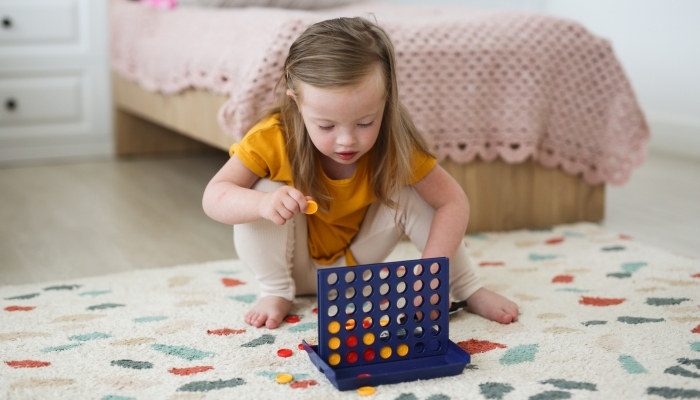
Inevitably, your child will encounter scenarios where they will need or want to use a particular accommodation or strategy, only to be met with resistance from the adults around them.
Part of being an effective self-advocate is building the necessary self-determination skills to be able to make progress towards your own goals, despite whatever obstacles are faced in the process.
Equipping your student with basic problem-solving55. Milner, C.. Problem Solving: How to Teach Young Children. Nationwide Children’s Hospital. https://www.nationwidechildrens.org/family-resources-education/700childrens/2023/07/problem-solving and conflict-resolution skills66. Garey, J.. Teaching Kids How to Deal With Conflict. Child Mind Institute. 2024. https://childmind.org/article/teaching-kids-how-to-deal-with-conflict builds self-efficacy abilities, which in turn promotes the goal of self-advocacy in all areas of life.
Sample IEP goals for building problem-solving skills could include:
- The student will demonstrate the ability to solve problems independently when faced with obstacles.
- The student will use words to express frustration or disagreement in 9 out of 10 conflict situations.
Teaching your child to set goals and use strategies to build self-advocacy skills positions them well to effectively communicate with other adults in their lives and increases their understanding of the world around them.
References
- Harris, K. (2022, July 19). Accommodations vs Modifications in Education. Modern Teacher. https://modernteacher.net/accommodations-vs-modifications
- Benefits and Examples of Student Self-Assessments. Wilson College. (2024, January 18). https://online.wilson.edu/resources/examples-of-student-self-assessment
- Using rubrics. Center for Teaching Innovation: Cornell University. (n.d.). https://teaching.cornell.edu/teaching-resources/assessment-evaluation/using-rubrics#:~:text=A%20rubric%20is%20a%20type,projects%2C%20portfolios%2C%20and%20presentations.
- Yavuz, H. M., Selçuk, B., & Korkmaz, B. (2017). Social competence in children with autism. International Journal of Developmental Disabilities, 65(1), 10–19. https://doi.org/10.1080/20473869.2017.1346224
- Milner, C. (n.d.). Problem Solving: How to Teach Young Children. Nationwide Children’s Hospital. https://www.nationwidechildrens.org/family-resources-education/700childrens/2023/07/problem-solving
- Garey, J. (2024, March 8). Teaching Kids How to Deal With Conflict. Child Mind Institute. https://childmind.org/article/teaching-kids-how-to-deal-with-conflict
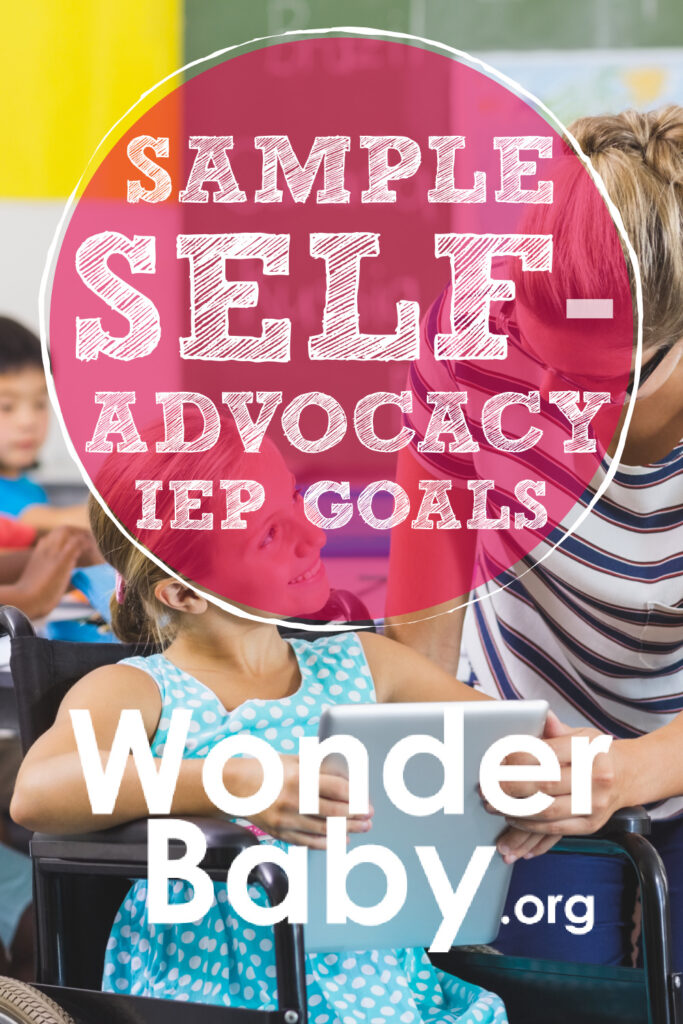
The information WonderBaby provides is not intended to be, and does not constitute, medical or other health advice or diagnosis and should not be used as such. Always consult with a qualified medical professional about your specific circumstances.
Related Posts
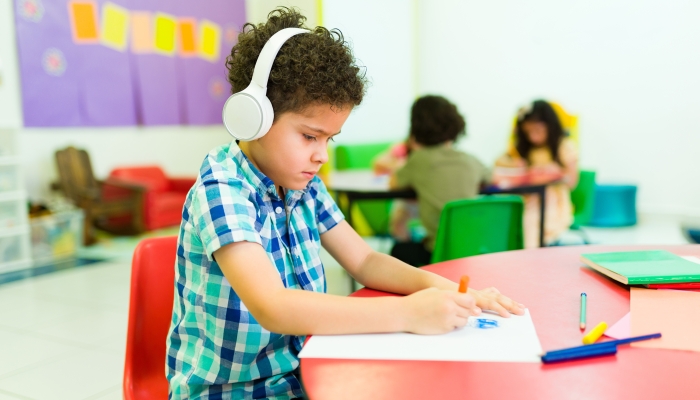
IEPs
8 Sample Behavior IEP Goals
Find out how specific, measurable, and attainable behavior IEP goals help your child learn coping strategies and problem-solving skills, leading to more progress.
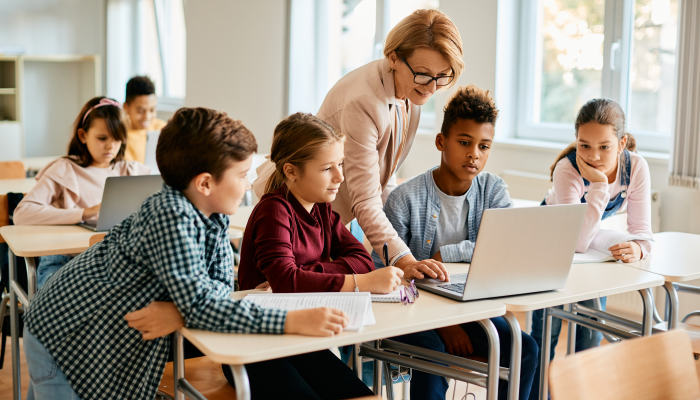
IEPs, Special Needs
Can AI Write My Student’s Next IEP?
While there are pros and cons, educators can use AI to help write a child’s IEP, streamlining the process.
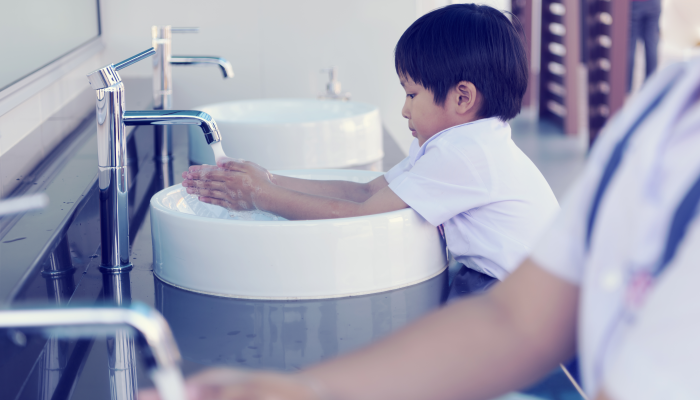
IEPs, Potty Training
7 Sample Toileting IEP Goals
Toileting IEP goals should address the specific needs and abilities of each child. Be flexible and patient as your child works on their toileting skills.